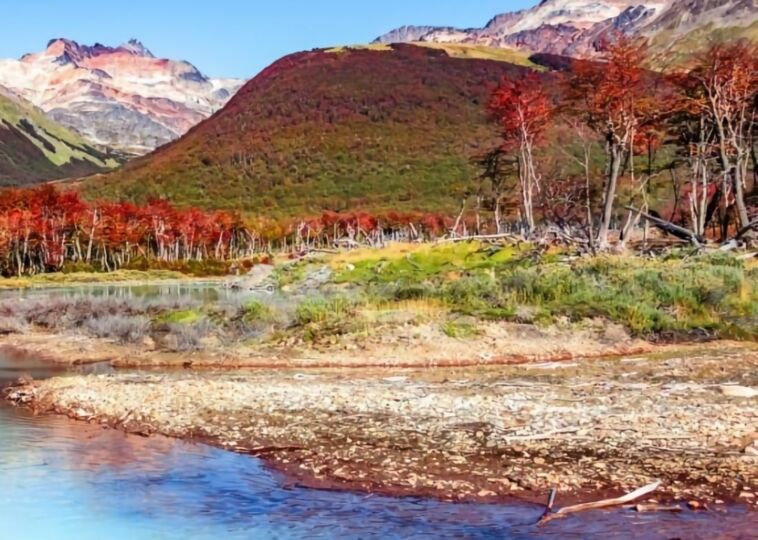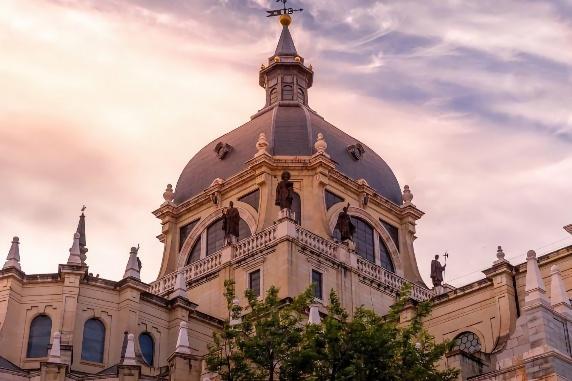South America’s Landmarks Like You’ve Never Seen Them Before

Contents [hide]
South America is a treasure trove of wonders that captivate the imagination, each landmark telling its own story of history, culture, and natural beauty.
Volunteer Point, the Falkland Islands

Tucked away in the rugged expanse of the Falkland Islands, Volunteer Point stands as a sanctuary of breathtaking wildlife. This remote corner of the world isn’t just about stunning landscapes; it’s a hidden gem for those passionate about wildlife photography and bird watching.
The sheer remoteness of the Falkland Islands contributes to the unique nature of Volunteer Point’s wildlife. For wildlife photographers, this is a golden opportunity to capture images of king penguins in their natural habitat, unspoiled and magnificent. Imagine a place where nature thrives in its most pristine form.
Salvation Islands of French Guiana

The Salvation Islands in French Guiana, once a notorious exile prison, is now a stunning tropical haven. This trio of tiny islands, with their coconut palms and pristine sandy beaches, offers a fascinating journey from a grim past to a luxurious escape. During the era of Emperor Napoleon III, the Salvation Islands were infamous as a remote prison colony.
The islands housed French prisoners under harsh conditions, their isolation making escape nearly impossible. The remnants of this dark chapter can still be seen, but today, the islands have shed their grim reputation. Picture yourself dining in a historical setting, where the echoes of the past mingle with the sounds of the ocean.
Kaieteur National Park, Guyana

Kaieteur National Park is more than a destination; it’s an immersion into an untouched, remote wilderness. What makes Kaieteur Falls particularly special is its seclusion. Unlike many of the world’s famous waterfalls, which can become crowded with tourists, Kaieteur offers a more intimate experience.
Visits are typically conducted in small groups, ensuring you can fully appreciate the falls without the usual crowds of people. This exclusivity enhances the experience and allows you to connect with the raw, untamed beauty of the falls in a way that’s increasingly rare in today’s travel landscape.
La Santísima Trinidad De Paraná, Paraguay

The Jesuit missions, including La Santísima Trinidad de Paraná, are emblematic of the Jesuits’ approach to evangelization. Upon their arrival in Paraguay, the Jesuits didn’t just impose their Christian beliefs on the indigenous people; they sought to integrate local customs into their religious practices.
This wasn’t just a matter of religious conversion but a profound exchange of cultural values. One fascinating example of this cultural integration is the cultivation of yerba mate. This traditional South American drink, now enjoyed worldwide, was nurtured under the guidance of the Jesuits, blending local traditions with European influence.
Machu Picchu, Peru

This legendary citadel was declared one of the New Seven Wonders of the World in 2007, and it captivates travelers with its mysterious allure and historical significance. If you’re looking to dive into the heart of Peru’s cultural heritage, here’s why Machu Picchu should be at the top of your list.
Machu Picchu isn’t just a historic site; it’s a marvel of ancient engineering and a symbol of Incan ingenuity. Perched nearly 8,000 feet above sea level, this stone city was constructed in the 15th century and remained hidden from the outside world until its rediscovery by Hiram Bingham in 1911.
Fort Zeelandia, Suriname

Built by Dutch colonizers in the 1600s, Fort Zeelandia is a testament to Suriname’s colonial past. Step inside Fort Zeelandia, and you’ll find more than sturdy walls and historical bricks. The fort is home to the Suriname Museum, a treasure trove of exhibitions that offer deep insights into the country’s indigenous cultures and colonial history.
One of the best features of Fort Zeelandia is its location. Perched gracefully on the banks of the Suriname River, the fort offers stunning views perfect for reflection.
Galibi, Suriname

Galibi is renowned for its extraordinary turtle-watching experience. Each year, from March to July, this small village becomes the stage for one of nature’s most incredible performances. Sea turtles, some of Earth’s most ancient and awe-inspiring creatures, make their way to Galibi’s pristine beaches to lay their eggs.
It’s a spectacular sight as hundreds of these magnificent reptiles waddle across the sand, burying their eggs in the soft, warm Earth. Knowing these tiny turtles take their first steps toward the ocean is magical. It’s a vivid reminder of nature’s cycles and the delicate balance of life.

Your journey to the Artigas Mines is as enchanting as the destination itself. The path leading to the mines meanders through picturesque jungles and rolling fields, offering a chance to immerse yourself in Uruguay’s natural beauty. The Mining Safari to the Artigas Mines is not just a tour; it’s a full-blown adventure.
You’ll be guided through stunning, gem-filled caverns and equipped with all the necessary tools and safety training to dig for your gemstones. It’s an opportunity to experience the thrill of mining firsthand and to take home a piece of Uruguay’s geological heritage.
Angel Falls, Venezuela

The highest waterfall in the world, Angel Falls, is located within the dense jungles of Canaima National Park. Named after American adventurer James Angel, who crash-landed an airplane near the falls in 1937, they are only visible from the air due to their remote location.
It is impossible to reach the falls overland due to a lack of walkable routes and dangerous terrain. Flights, however, offer views over the jungles, ancient mountains, and, of course, the crashing waters of Angel Falls.


